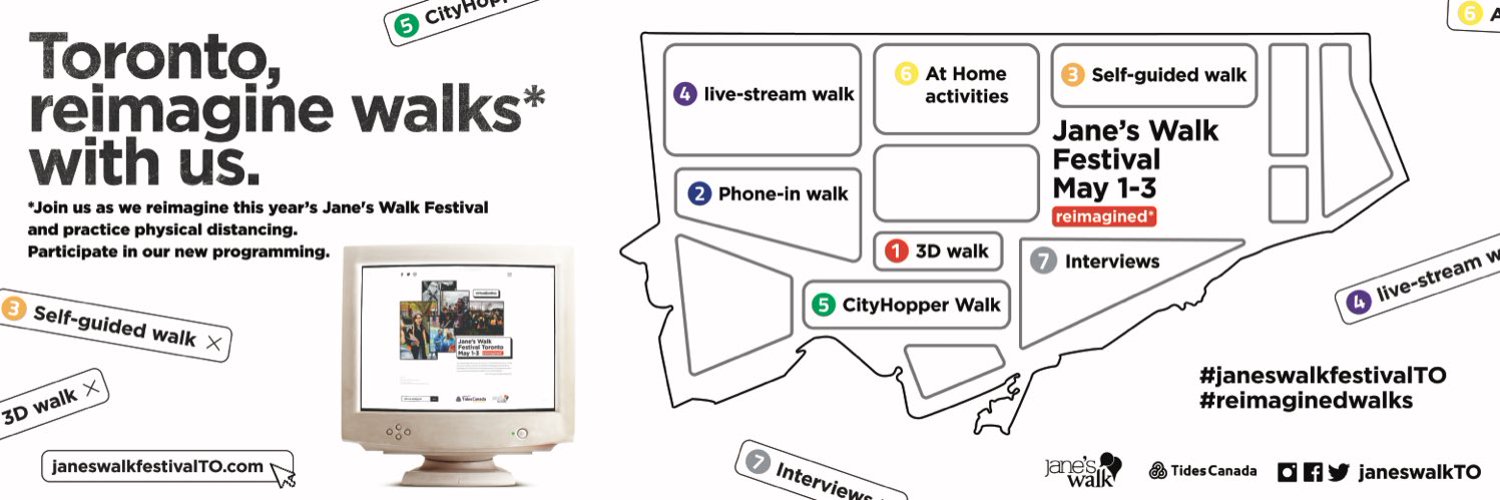As we adjust to the “new normal” that is the COVID-19 pandemic, we are starting to take note of how unique each community’s needs are in response to the effects of physical distancing, health care system strains, and closures of important services. There remain countless questions about how to ensure that communities – especially the most vulnerable – continue to receive the support they need.

As COVID-19 requires that communities and individuals continue to distance themselves, we’re collectively being asked to re-imagine what it means to come together. As we are all learning during this global pandemic, it is crucial that we continue to find ways to connect with one another and make sure that “physical distancing” does not lead to us feeling entirely isolated from our communities.
For Jane’s Walk, a project on the Tides Canada shared platform, physical distancing was a major hurdle. Jane’s Walk is an annual festival that honours and activates the ideas of Jane Jacobs, a 1960s urban activist, who encouraged us to get to know our cityscapes and our neighbours. Every year in over 250 cities around the world, volunteers lead walks through their communities to encourage people to reflect, share, question, and re-imagine the places where they live, work, and play.
Physical distancing, though, means that core feature – walking together – is not possible this year. Rather than cancel Jane’s Walk for the first time in over a decade, the team has taken on the unique challenge of running a digital Jane’s Walk. This required that the team reimagine what the festival could look and feel like. “We wanted to disrupt the traditional definition of what walking together means and think about how we could redefine Jane’s Walk,” said Igor Samardzic, one of the organizer’s of this weekend’s Toronto Festival.
The team decided to offer three different formats of walks. The first is a live stream walk, where individuals will take video and audio of their walks and share them online. The second is self-guided walks with descriptions, pictures, and audio narratives that will allow people to lead themselves on walks. The third format is 3-D walks created on Google that will allow people to participate on walks from the safety of their own couch.
“All of these new activities and programming options allowed us to push ourselves and our to reimagine not how to replace physical walks, but how to enhance them through different formats and experiences that we hope will increase engagement and allow more people to participate,” Samardzic continued.
While this is all still an experiment, one has to imagine that Jane Jacobs would approve of finding ways to build those social connections in unique ways suited to the time we live in. After all, she once wrote that it was the everyday activities and interactions that occur within a neighbourhood are what make it resilient in a time of crisis. And so it only makes sense that as we need to limit our face to face interactions to stop the spread of the virus, we come up with new ways to build those social connections.
Jane’s Walk Festival will be happening remotely and digitally this weekend. Join a walk by visiting their site to choose the activity that excites you most!
This story is one example of the important work happening on the Tides Canada shared platform, which will be supported by our COVID-19 Rapid Response Fund. A donation to the Rapid Response Fund for Changemakers will allow these projects to directly address new and growing community needs in the wake of a global pandemic. We believe that communities know best what they need and that now, more than ever, we need to provide flexible funding that will allow for quick, innovative solutions to the challenges of a global pandemic. Thank you for your support.
